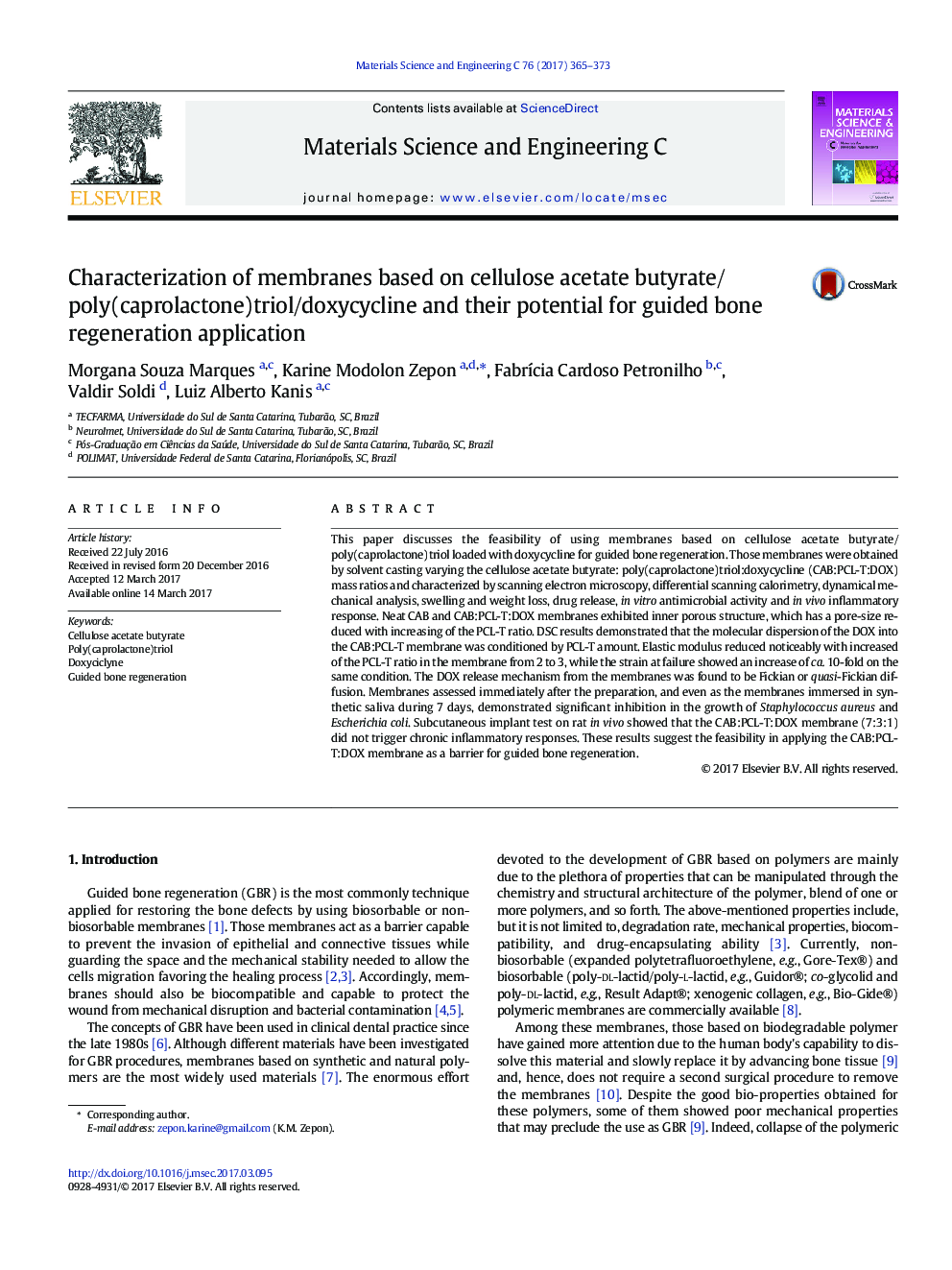| کد مقاله | کد نشریه | سال انتشار | مقاله انگلیسی | نسخه تمام متن |
|---|---|---|---|---|
| 5435128 | 1509145 | 2017 | 9 صفحه PDF | دانلود رایگان |
- Novel membranes based on the polysaccharide CAB and the polyester PCL-T are prepared by casting and loaded with DOX
- The DOX release from the membranes was modulated by changing the PCL-T amount.
- Membranes loaded with DOX showed antimicrobial activity and did not induce cellular toxicity.
- CAB:PCL-T:DOX membranes can be useful for guiding bone regeneration.
This paper discusses the feasibility of using membranes based on cellulose acetate butyrate/poly(caprolactone)triol loaded with doxycycline for guided bone regeneration. Those membranes were obtained by solvent casting varying the cellulose acetate butyrate: poly(caprolactone)triol:doxycycline (CAB:PCL-T:DOX) mass ratios and characterized by scanning electron microscopy, differential scanning calorimetry, dynamical mechanical analysis, swelling and weight loss, drug release, in vitro antimicrobial activity and in vivo inflammatory response. Neat CAB and CAB:PCL-T:DOX membranes exhibited inner porous structure, which has a pore-size reduced with increasing of the PCL-T ratio. DSC results demonstrated that the molecular dispersion of the DOX into the CAB:PCL-T membrane was conditioned by PCL-T amount. Elastic modulus reduced noticeably with increased of the PCL-T ratio in the membrane from 2 to 3, while the strain at failure showed an increase of ca. 10-fold on the same condition. The DOX release mechanism from the membranes was found to be Fickian or quasi-Fickian diffusion. Membranes assessed immediately after the preparation, and even as the membranes immersed in synthetic saliva during 7 days, demonstrated significant inhibition in the growth of Staphylococcus aureus and Escherichia coli. Subcutaneous implant test on rat in vivo showed that the CAB:PCL-T:DOX membrane (7:3:1) did not trigger chronic inflammatory responses. These results suggest the feasibility in applying the CAB:PCL-T:DOX membrane as a barrier for guided bone regeneration.
217
Journal: Materials Science and Engineering: C - Volume 76, 1 July 2017, Pages 365-373
